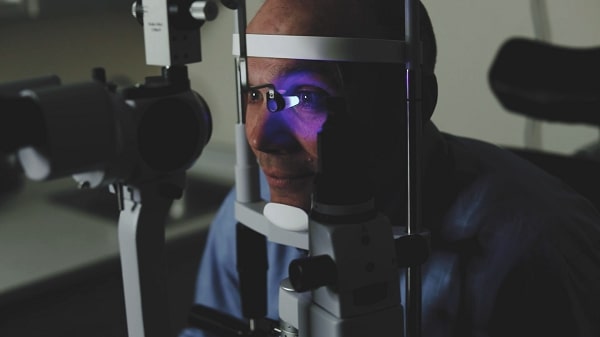Eyecare
We care about your eye health and your family as well
Glaucoma
What is Glaucoma?
Glaucoma is an ocular disease characterized by progressive loss of healthy optic nerve tissue. The optic nerve is the cranial nerve responsible for carrying visual information to the brain from the eye. It is made up of millions of nerve fibers originating in the retina.
Glaucoma is generally painless, and most often the vision loss associated with progressive glaucoma goes unnoticed until the more advanced stages. This is because unlike macular disease, glaucomatous vision loss involves peripheral or non-central vision first.
In addition to what is known as primary open angle glaucoma and low tension glaucoma, this disease can also result from injury, the physical configuration of the eye, inflammation, or abnormal blood vessel growth. These types of glaucoma can result in pressures that become so acutely elevated that they cause pain, blurred vision, and even nausea. This is less common than the silent, painless form of the disease but can cause significant vision loss in a much shorter period of time.

Many people think of the “air puff” as the “glaucoma test.” This and related tests – known as non-contact tonometry – are screening for elevated or changing intraocular pressure (IOP). The “normal” range of IOP is from 10 to 21 mm Hg, but this measurement is a very small part of the picture of glaucoma. Elevated IOP does not necessarily equate to glaucoma. This disease and its causes are still relatively poorly understood. However, studies have shown that increased IOP can, in some cases, be the cause of stress on the optic nerve that leads to the loss of retinal nerve fiber characteristic of glaucoma.
Treatment of glaucoma currently revolves around the lowering of IOP to reduce the stress this puts on the optic nerve. This can be done with topical treatment (eye drops) or with surgical intervention to improve how fluid exits the eye. Typically drops are the first line of treatment for glaucoma. Recent advancements in surgical options are making filtration surgery more appealing for management of earlier stages of the disease.
Minimally invasive glaucoma surgery (MIGS) is a type of glaucoma filtration surgery in which a small shunt is implanted in the drainage angle of the eye. This is typically done in conjunction with cataract surgery. The iStent implant is one of these devices and is currently the smallest implantable medical device used in the human body.
All patients seen for a full eye health examination are screened for glaucoma risk. This starts with a measurement of intraocular pressure and continues with screening visual field testing and clinical evaluation of the physical structure of the optic nerve at the back of the eye. If risk factors for glaucoma are found during a comprehensive exam, further testing will be ordered. This will typically include a structural scan of the thickness of the optic nerve using the OCT (Ocular Coherence Tomography). If this scan shows abnormal thinning of the optic nerve, a formal visual field will be ordered to test for subtle changes in peripheral vision. Often these tests show normal structure and function and treatment is not indicated. These risk factors are monitored on an annual basis or more frequently as required to prevent conversion to glaucoma or progression of vision loss.
Contact Us to schedule your appointment
Call us on (406) 535-2020 or complete the inquiry form to schedule your appointment or to learn more about how we help our patients.


 Call us at
Call us at